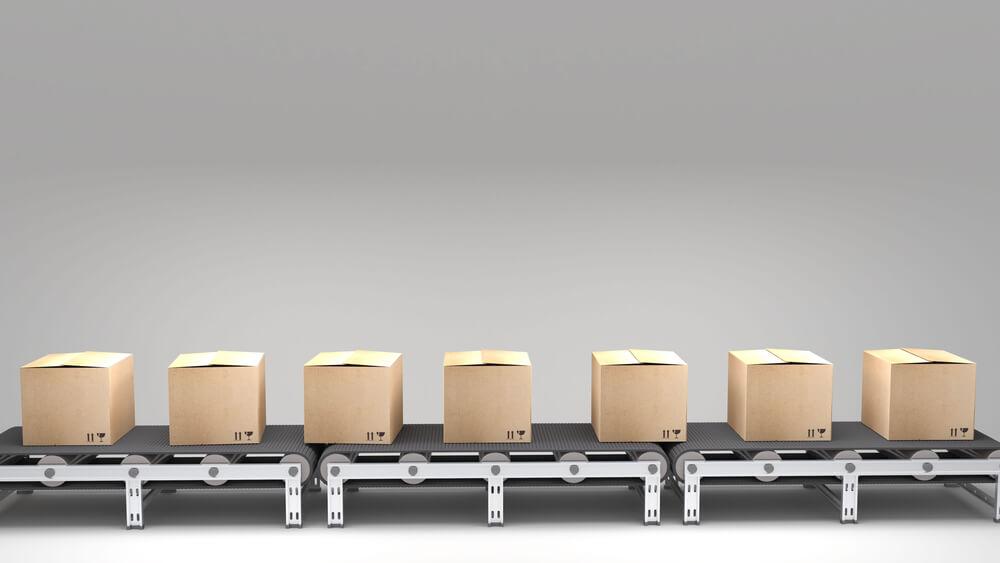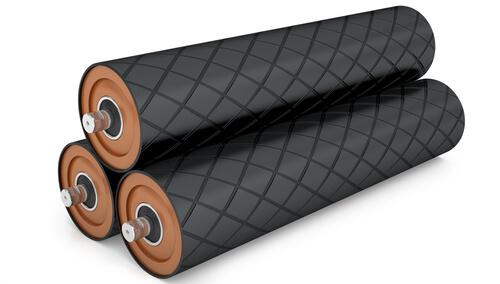Warehouse efficiency hinges on smooth product movement. Conveyor belts are the workhorses behind this flow, transporting packages from one point to another. Understanding the components of a package handling conveyor is crucial for maximizing throughput and minimizing downtime.
This guide explores the essential parts of package handling conveyor belting and their functions. We’ll also explore specialty parts for unique applications and provide valuable maintenance tips to keep your conveyors running smoothly.
Warehouse Package Conveyor Belting Parts and Functions
Industrial conveyor systems are composed of many parts that work together to move, sort, and weigh material and packages efficiently.
The key components of a conveyor belt system are the belting, pulleys, rollers, motors, and frame.
Conveyor Belting
The conveyor belting is the most obvious part of a package handling conveyor, and it comes in various materials and sizes. Each material has its own strengths and applications:
Thermoplastic:
- Material: Often PVC (polyvinyl chloride) or PU (polyurethane).
- Strengths: Affordable, lightweight, good flexibility for curved conveyors, and resists moisture and some chemicals.
- Applications: Ideal for light to medium-weight packages, food processing (due to FDA-approved options), and applications requiring easy cleaning.
Rubber:
- Material: Natural or synthetic rubber compounds.
- Strengths: Highly durable, excellent impact resistance for heavy loads, good grip for inclined conveyors; some varieties are oil and grease-resistant.
- Applications: Best suited for heavy-duty conveying of abrasive materials, bulk goods, and unevenly shaped packages.
Metal:
- Material: Stainless steel, carbon steel, or aluminum.
- Strengths: Extremely strong and durable with high-temperature resistance. Some options are magnetic for ferrous material handling.
- Weaknesses: Rigid, not ideal for tight curves, and can be noisy during operation.
- Applications: Used in food processing (stainless steel), conveying hot materials, and applications requiring high strength and rigidity (e.g., metal chip handling).
Fabric:
- Material: Primarily woven polyester or nylon with various coatings.
- Strengths: Cost-effective, lightweight, and good flexibility for curved conveyors. Some options are breathable for food applications.
- Weaknesses: Not as durable as rubber or metal, and susceptible to punctures and tears with sharp objects.
- Applications: Suitable for light to medium-weight packages, grain and bulk material handling, and applications requiring ventilation (e.g., baked goods).
IBT Pro Tip: When choosing a belt, be sure to consider weight capacity and incline. For example, use heavy-duty belt materials to convey aggregate. For inclined conveyors, cleats (attachments that grip items) are necessary to prevent slippage.
Conveyor Pulleys
Conveyor pulleys are very similar to rollers in that they are elongated cylinders located underneath to support the belting material. The difference between a conveyor pulley and a roller is that pulleys are used to change the direction, drive, or put tension on the conveyor belt, whereas a roller is only there to support the belt and loaded packages.
There are three main types of pulleys:
- Drive pulleys: These are powered by a motor to move the belt
- Return, Idler, & Tail Pulleys: A tail pulley supports and puts tension on the slack section of the belt
- Snub Pulleys: These pulleys increase the traction for heavy loads.
- Take-Up Pulley: The take-up pulley manages the tension for the entire conveyor belt. It can double as a tail pulley.
Pulleys can also be equipped with pulley lagging, which is a rubber cover that enhances the grip and protects the belt.
Conveyor Rollers
Rollers, like pulleys, are elongated cylinders attached to bearings across a conveyor bed. They support the conveyor belt or directly support the packages.
Some roller types include:
- Idler Rollers: Idler rollers, also known as conveyor rollers, are the standard type of roller that supports a conveyor belt.
- Weigh Rollers: These rollers weigh the packages they support.
- Impact Rollers: Impact rollers are a set of rubber discs mounted on a steel tube. The rubber cushions the belt and rollers from stress and impacts from free-falling packages.
Different roller and pulley materials will affect the durability, weight capacity, noise levels, and cost. Choosing the right roller will depend on the weight capacity and package type (boxes, totes, tubes).
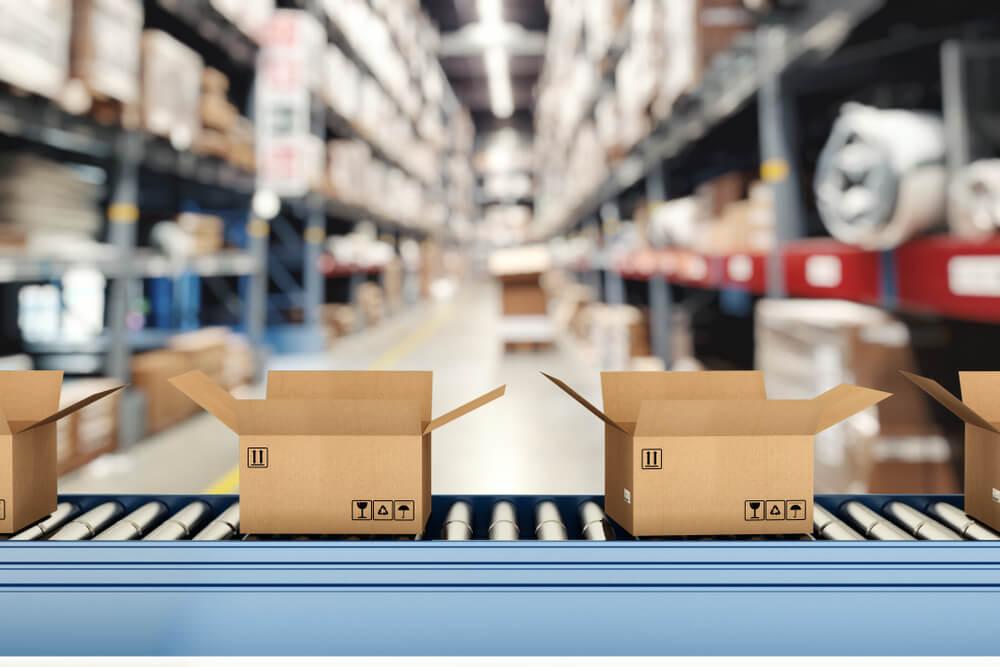

IBT Pro Tip: Use this comprehensive guide to learn how to measure a conveyor roller correctly.
Conveyor Drive Motor Unit
A conveyor motor provides the power to move the belt, and therefore also the products, along a motorized conveyor. Motors may use variable-speed or constant-speed reduction gears to power the belt.
The power is transferred to the gearbox, which turns the pulleys. A three-horsepower motor may be enough for a small conveyor, but a faster or larger conveying system will require a larger and more powerful motor.
Conveyor Frame & Structure
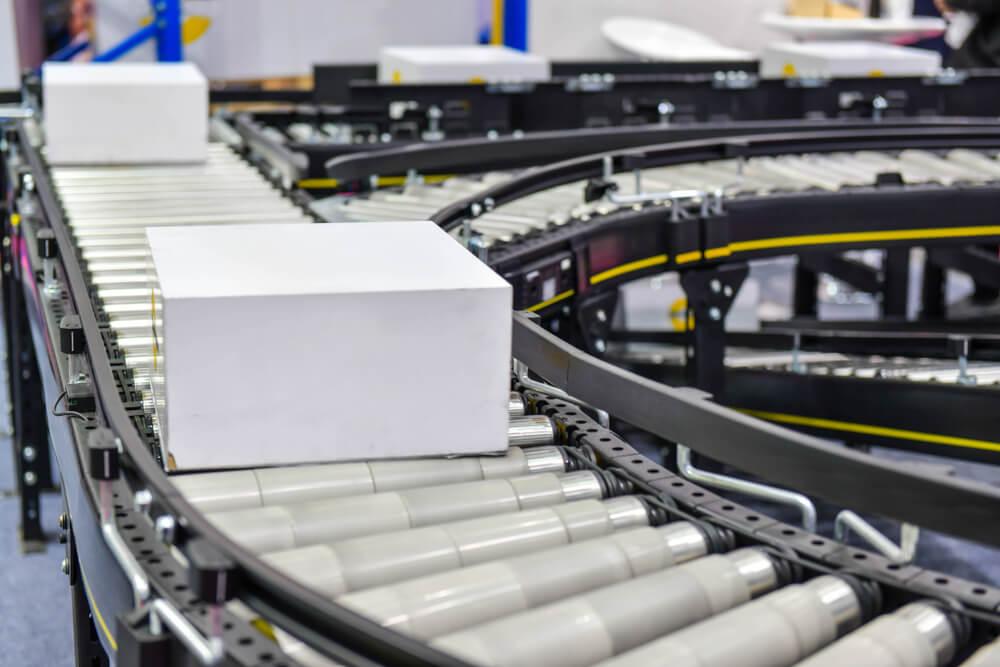

The frame is the backbone of the whole conveyor; it supports and holds all the components. Steel frames offer superior strength for heavy loads, while aluminum is suitable for lighter applications.
The frame is designed to fit the space it’s in. Frame height may be a variable for the height of loading and other operations. Facilities may also have multiple frames stacked on top of each other to allow for multiple conveyors to run at the same time and maximize their vertical space.
Frames can be fixed in place or mobile, depending on the facility’s needs. Fixed conveyor frames have a longer, stable service life. Mobile conveyor frames are particularly useful if you need to frequently rearrange or change locations.
Beyond the Basic Components: Specialty Conveyor Parts for Specific Warehouse Applications
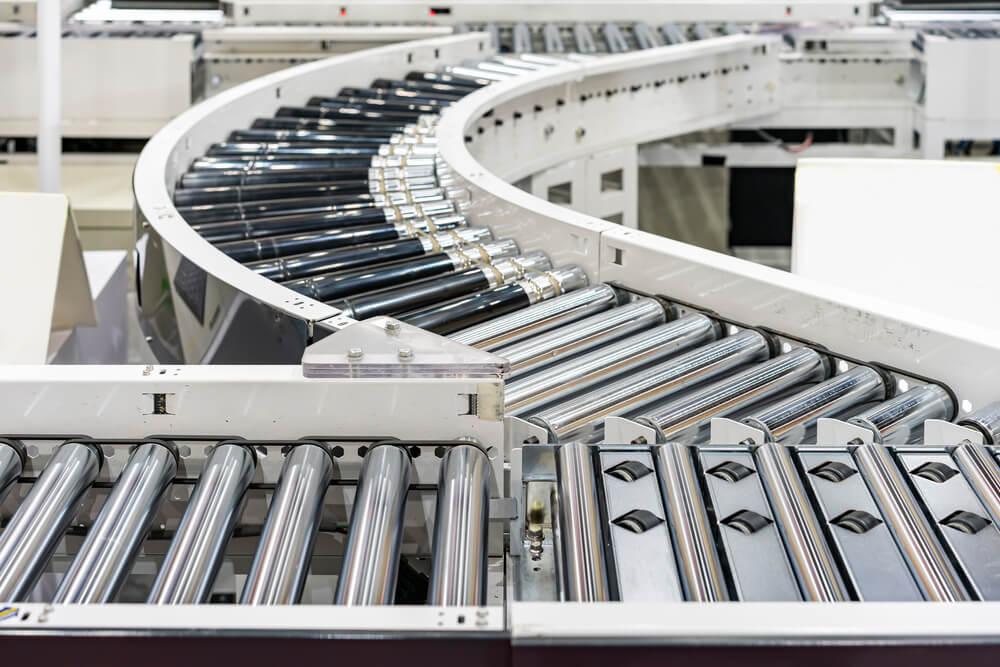

There are many innovative products and conveyor add-ons that help solve specific problems. Here are some specialty package handling conveyor system parts and upgrades:
- Wear Strips: These strips shield belt edges from package contact.
- Diverters: These points in the conveying “road” sort packages to different destinations in a facility.
- Merge Points: Merge points combine conveyor flows (which may have been separated by diverters) into a single line seamlessly.
- Accumulation Tables: These allow packages to temporarily buffer or queue before merging onto another conveyor. This helps manage surges in package flow and prevent jams at merge points.
- Barcode Scanners: Scanners mounted along the conveyor scan package labels for sorting, tracking, and routing purposes. This data can be integrated with warehouse management systems for increased efficiency.
- Weighing Scales: These can be integrated into the conveyor frame to measure package weight in real time. The information can be used for automated sorting based on weight or calculating shipping costs.
By incorporating specialty parts and add-ons, you can significantly improve the functionality, efficiency, and safety of your warehouse. Add-ons and upgrades are available for many parts of your package handling conveyor system, from belt modifications to accumulation tables to pick-and-place robotics.
More IBT Pro Tips: Conveyor Belt System Maintenance
- Regularly inspect belts for wear, tears, or damage from sharp objects.
- Properly lubricate rollers to minimize friction and wear, especially in dusty environments.
- Ensure proper pulley alignment to prevent belt tracking issues and package jams.
- Follow proactive maintenance and avoid conveyor belt hazards with the best safety practices for conveyor systems to get the most out of your conveyor and increase productivity.
- If you are having trouble with belt slippage or belt tracking issues, take a look at our conveyor belt troubleshooting guide.
IBT Is Your Trusted Partner for Conveying Solutions
If you need help finding the right package handling conveyor belt parts or add-ons, reach out to the professionals at IBT Industrial Solutions. Our Conveying Systems and Services Division is ready to optimize your process and conveyor system to maximize efficiency and minimize downtime.
Want to know more about our conveying expertise? Contact us online today! We look forward to providing you with your next industrial solution.

